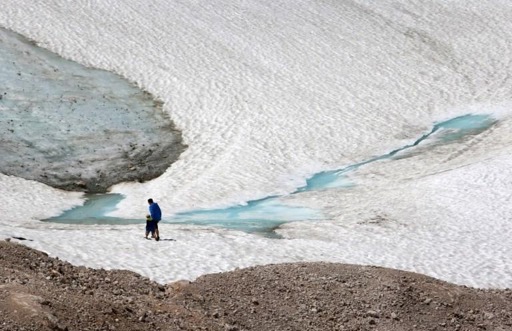Germany officially has one glacier less: following the warm summer, the Southern Schneeferner has lost its status as a glacier, the Bavarian Academy of Sciences announced on Monday.
Geo radar measurements from mid-September show that the Southern Schneeferner on the Zugspitze, Germany's highest mountain, has lost massive amounts of ice. In most places the ice mass is barely two metres thick. At its deepest point, it is still six metres thick, down from 10 metres in 2018.
The total surface of the glacier has been halved in four years and is now less than 1 hectare.
Scientists at the Bavarian Academy of Sciences expect the remaining ice to melt completely within two years. Due to its reduced thickness, the ice is no longer expected to move, which means that, officially, there is no longer a glacier there.
As a result, Germany has only four glaciers left, and they also melted considerably in the past summer. The four are the Northern Schneeferner and the Höllentalferner on the Zugspitze, in the Tyrolean Alps, and the Blaueis and Watzmann glaciers, in the Berchtesgadener Alps.
Glaciers are fields of mostly ice, snow and firn that usually flow slowly from mountains to valleys under their own pressure. Most of the glaciers that exist today were formed during the last ice age, about 15,000 years ago.

